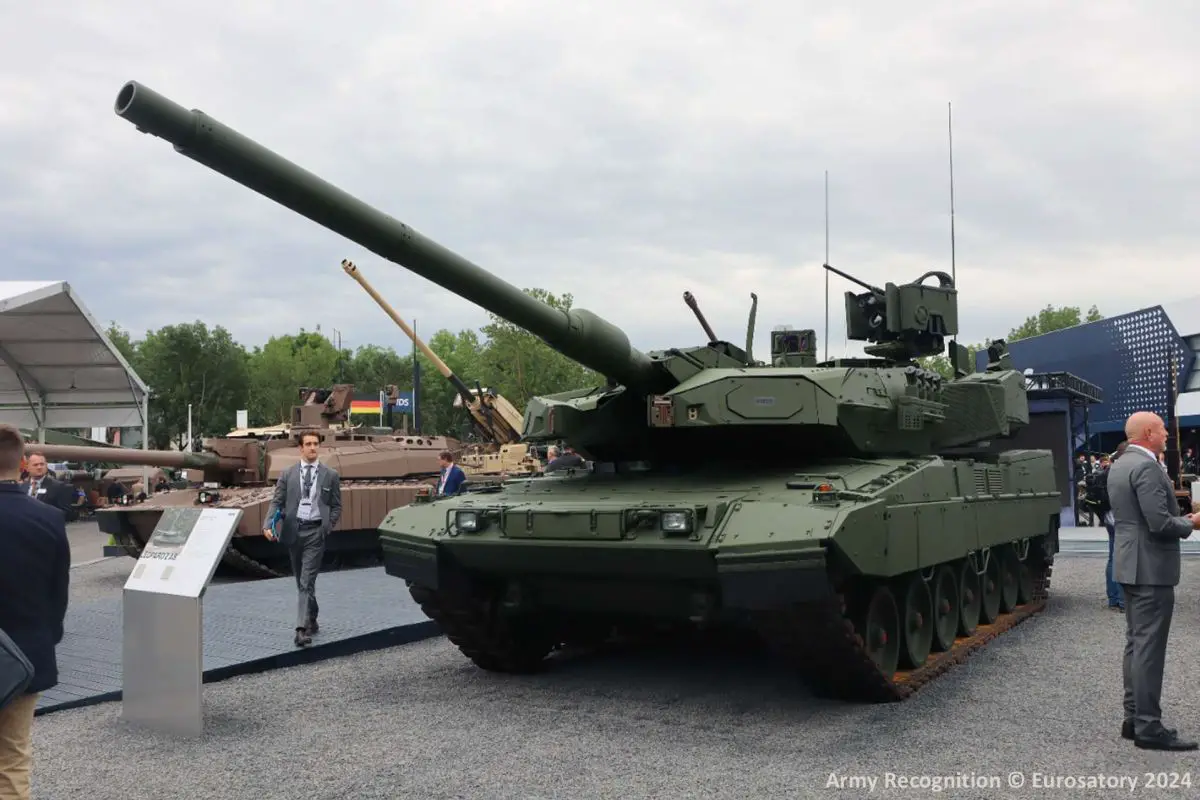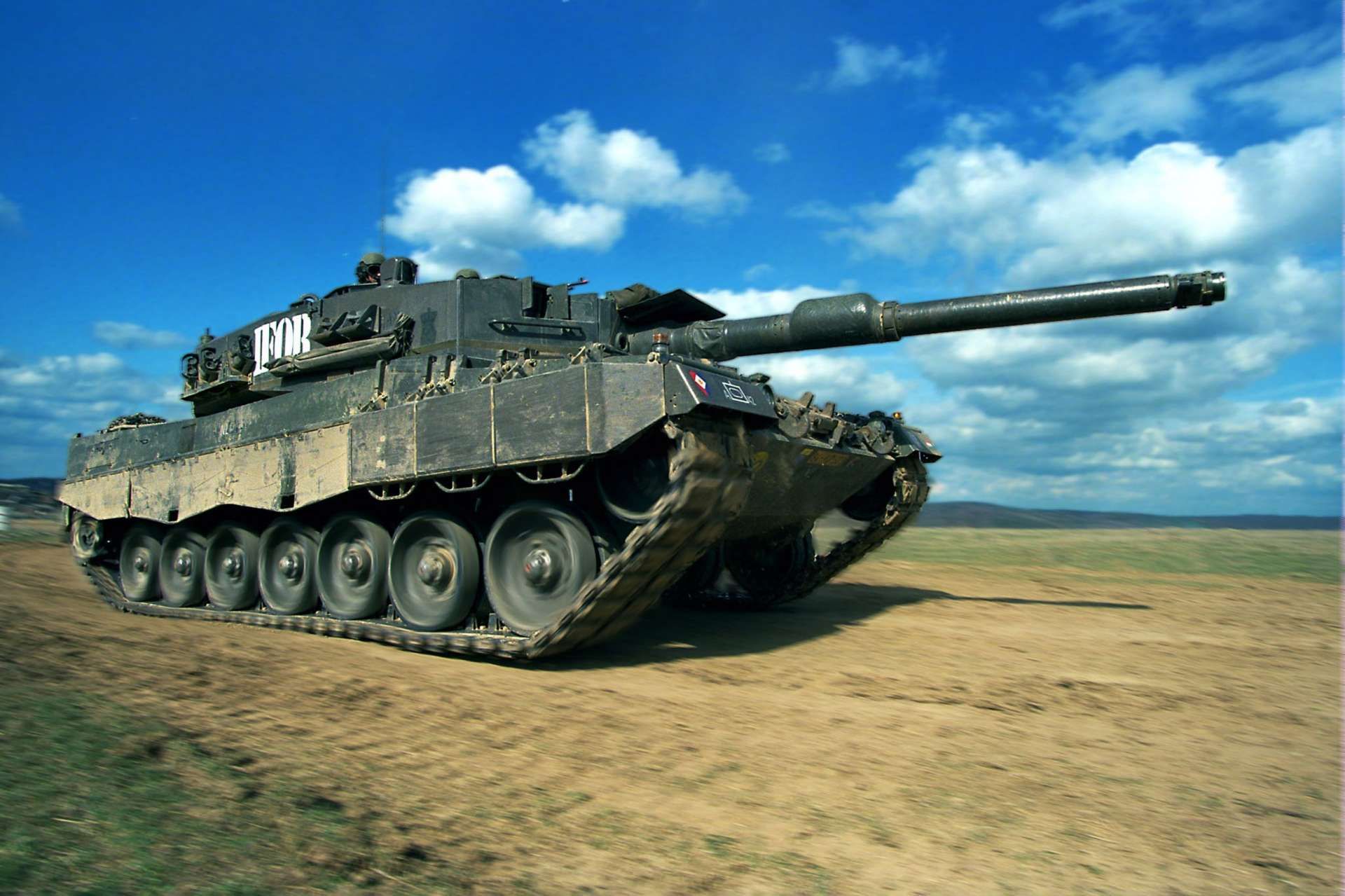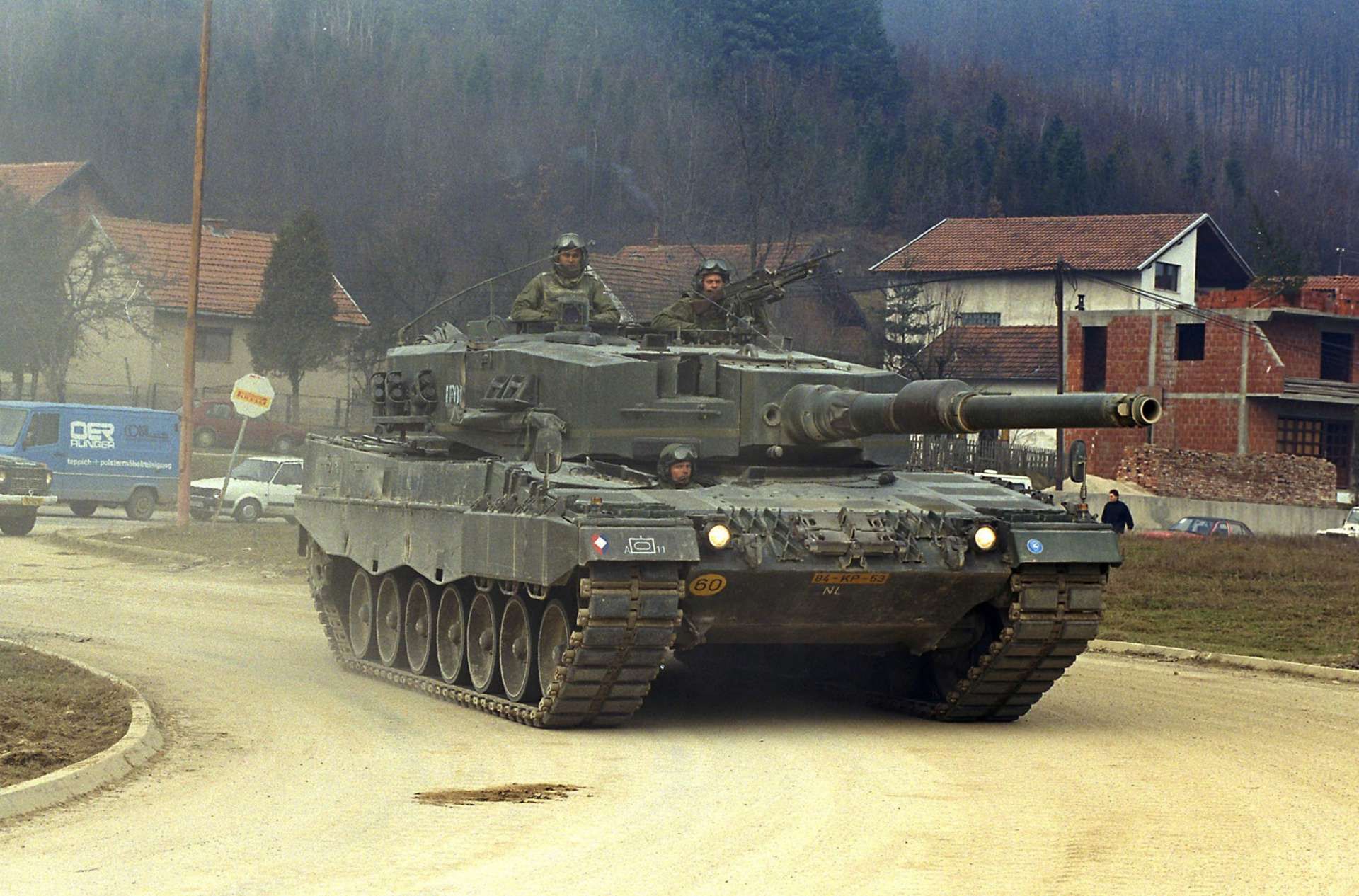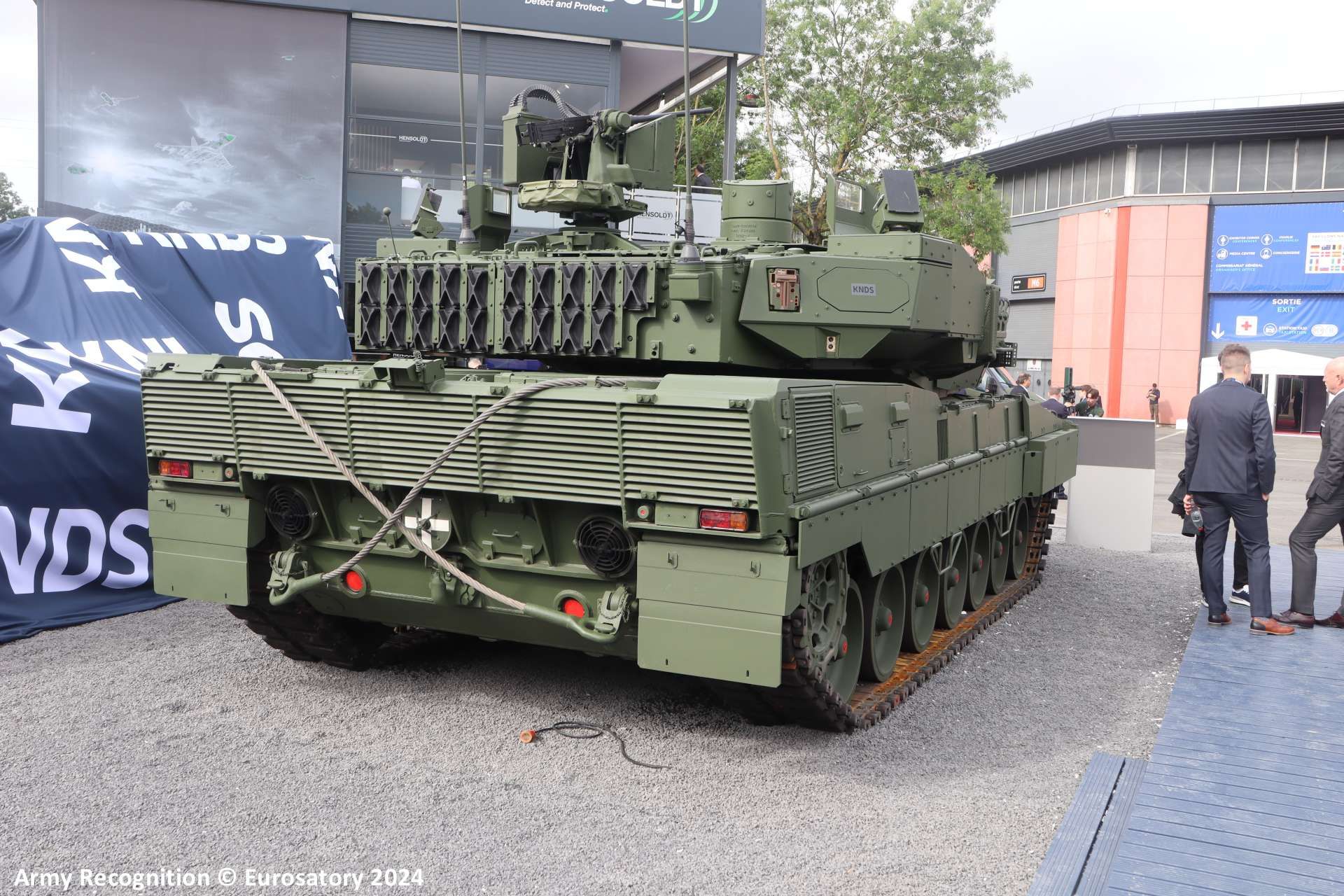Breaking News
Breaking News: Netherlands to announce creation of new tank battalion with 50 Leopard 2A8 tanks.
According to NRC on September 3, 2024, in a new Defense Memorandum scheduled for presentation this Thursday, the Dutch government outlines plans to establish a new Dutch tank battalion consisting of nearly fifty Leopard 2A8 tanks, with estimated annual costs ranging between 260 million and 315 million euros. This plan represents a shift in the defense strategy of the Netherlands, as the Dutch Army is set to acquire its own battle tanks once again.
Follow Army Recognition on Google News at this link

The Leopard 2A8 is the latest variant in the Leopard 2 series of main battle tanks, developed by Krauss-Maffei Wegmann (KMW) and Rheinmetall, and unveiled in its production form at Eurosatory 2024. (Picture source: Army Recognition)
The Defense Memorandum will be presented by Defense Minister Ruben Brekelmans and State Secretary Gijs Tuinman. Under the coalition agreement, the government has committed to meeting the NATO standard for defense spending, set at 2 percent of the Gross Domestic Product (GDP). To achieve this, the Defense Budget, currently at 21.4 billion euros or 1.95 percent of GDP, will be structurally increased by 2.4 billion euros.
This additional funding will provide for several critical allocations, including the establishment of a new tank battalion, which had previously been discontinued due to budget constraints, but also additional F-35A fighter jets, anti-submarine frigates (ASW), and NH-90 NATO Frigate Helicopters (NFH) for naval missions.
The decision to phase out tanks in 2011 has been a long-standing issue for the Royal Netherlands Army. Re-establishing a tank battalion, a proposal previously calculated by former Defense Minister Kajsa Ollongren, is projected to cost between 260 million and 315 million euros annually. These costs include the purchase of new tanks, operational and personnel expenses for about 350 military personnel, and related expenditures, such as the maintenance of storage facilities and other infrastructure over fifteen years. The financial means for this initiative were not available within the existing Defense Budget.
With this decision, the government addresses the preferences of a majority in the House of Representatives and meets the requirements set by NATO. The NATO Defense Capability Review in June noted that the Dutch land forces did not possess sufficient firepower to achieve the objective of providing both a "heavy" and a "medium" infantry brigade during wartime. The new tank battalion is intended to help meet these objectives. The return of tanks comes thirteen years after the last Leopard 2 tanks were phased out.

The Netherlands became the first foreign buyer of the Leopard 2 tank on March 2, 1979, purchasing 445 units from the second and third production series. (Picture source: Dutch MoD)
The reintroduction of tanks is considered a significant step forward by Defense Ministry sources, as the Netherlands became the first foreign buyer of the Leopard 2 tank on March 2, 1979, purchasing 445 units from the second and third production series, with modifications such as a Dutch-made radio system, unique smoke grenade launchers, FN MAG machine guns, and a locally manufactured driving device. This decision was made in close cooperation with Germany, allowing for technology exchanges that influenced both countries' tank production. The procurement was completed by July 1986.
Due to military restructuring, the Netherlands reduced its inventory over time. Initially, the Netherlands purchased 445 Leopard 2s, but in 1993 decided to reduce this number and later sold surplus tanks to Austria and Norway. Of the remaining tanks, 330 were upgraded to the A5 standard, and later 180 of these were further upgraded to the A6 level. Subsequently, 37 A6NLs were sold to Portugal, 20 A6NLs and 80 A4NLs to Canada, and 52 A4NLs to Norway. Additionally, 10 Leopard 2A4NLs were converted into the Kodiak armored engineer vehicle, and the Büffel armored recovery vehicle was adopted in the Dutch-specific configuration known as the Bergingstank 600kN.
Due to defense budget cuts, the Netherlands decided to phase out all Leopard 2A6 tanks in April 2011, which has been a point of contention for the Royal Netherlands Army. In 2015, a small tank unit was formed, consisting of eighteen Leopard 2 A6M A2 tanks leased from Germany. However, these tanks remain part of a German formation (the 414 Tank Battalion) and are stationed at a German NATO training area, with reciprocal arrangements allowing a German unit to join a Dutch brigade. Therefore, according to internal sources in the Dutch Defense Ministry, the acquisition of domestically owned tanks is seen as an important development for the Dutch Army.

Over the years, the Dutch Leopard 2 tanks participated in various missions, including the NATO-led Implementation Force (IFOR), a multinational peace enforcement force in Bosnia and Herzegovina. IFOR operated under a one-year mandate from December 20, 1995, to December 20, 1996, as part of Operation Joint Endeavour. (Picture source: Dutch MoD)
According to NRC, there is a consensus on the type of tank to be acquired. The Dutch Army has over forty years of experience with the Leopard 2 and has closely collaborated with the German Army. Last year, Germany invited the Netherlands to participate in the Leopard 2A8 Procurement Initiative, which aims to consolidate demand from various NATO countries to reduce costs.
The Leopard 2A8, the latest version of the tank, will be standardized across all participating countries, unlike in the past when customers often had specific requirements. Several countries, including Norway and the Czech Republic, have already joined the initiative. According to sources within the Ministry of Defense, the first contracts could be signed in the coming months.
In response, the Ministry of Defense stated that it does not wish to comment further on the contents of the 2024 Defense Memorandum, which will be officially presented this Thursday.

According to sources within the Dutch Ministry of Defense, the first contracts for the purchase of the Leopard 2A8 could be signed in the coming months. (Picture source: KNDS)
The Leopard 2A8 is the latest variant in the Leopard 2 series of main battle tanks, developed by Krauss-Maffei Wegmann (KMW) and Rheinmetall, and unveiled in its production form at Eurosatory 2024. Based on the Leopard 2A7+, it features several upgrades in armor, firepower, and situational awareness. The tank is equipped with a multi-layered armor protection system that uses steel, tungsten, composite materials, and ceramic components, along with the EuroTrophy Active Protection System (APS), which offers 360-degree radar coverage and intercepts incoming projectiles. It also includes an omnidirectional observation system, advanced optics with third-generation thermal imaging, and a fire control system designed to improve targeting accuracy.
The Leopard 2A8's main armament is an improved 120 mm/L55 A1 smoothbore gun, capable of firing a variety of munitions, including programmable ammunition for different target types. Secondary armaments consist of a coaxial 7.62 mm machine gun and a 76 mm grenade launcher. The tank's design incorporates reinforced protection on the turret and hull, with additional features such as a laser warning system and the option for a remote-controlled weapon station.
Powered by a 1,500 hp engine, the Leopard 2A8 has a maximum speed of 65 km/h and an operational range of about 400 kilometers. The tank includes a reinforced suspension system, upgraded cooling units, and various ergonomic improvements, which are intended to support its performance across different terrains and combat scenarios. These updates aim to enhance the vehicle's overall capabilities while maintaining the design framework of the Leopard 2 series.

Powered by a 1,500 hp engine, the Leopard 2A8 has a maximum speed of 65 km/h and an operational range of about 400 kilometers. (Picture source: Army Recognition)


























